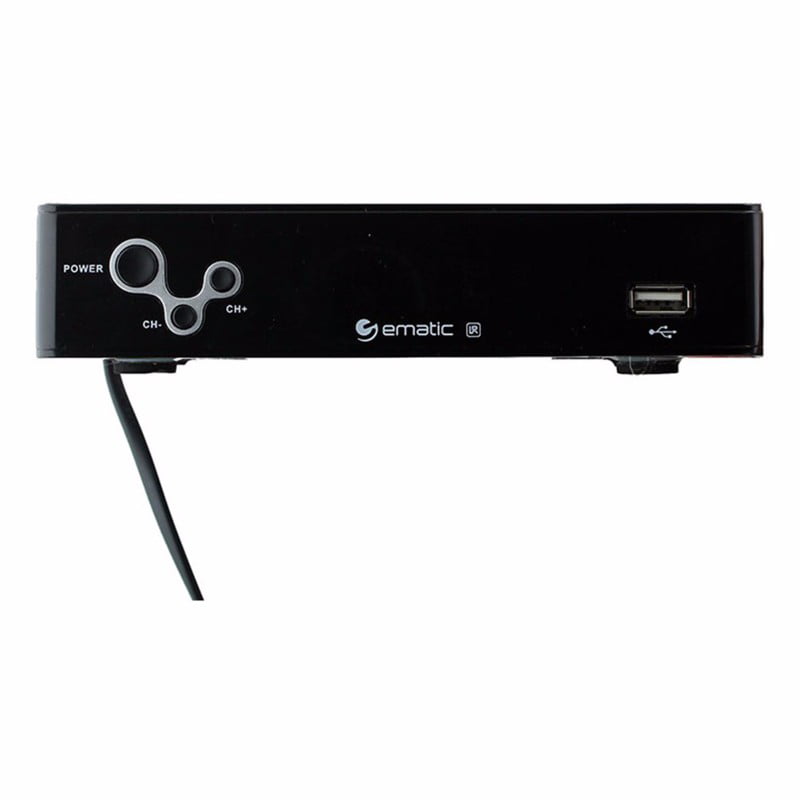
Additionally, viewers who have newer televisions with built-in digital ATSC tuners will not need an external digital television adapter.

Viewers who receive their television signals through cable or satellite were not affected by this change and did not need a digital television adapter (however, see the cable TV exception below). Since many of the low-power TV stations continued to broadcast in analog for a while, consumers who watch low-power stations needed an adapter with an analog passthrough feature that allows the viewer to watch both digital and analog signals. Viewers who watch broadcast television on older analog TV sets must use a digital converter box.

On June 12, 2009, all full-power analog television transmissions ended in the United States. Because the DTV transition did nothing to reduce the number of broadcast television system standards (and in fact further complicated them), and due to varying frequency allocations and bandplans, there are many other combinations specific to other countries. In North America and South Korea, these ATSC tuner boxes convert from ATSC to NTSC, while in most of Europe and other places such as Australia and most Asian countries, they convert from Digital Video Broadcasting (DVB) to PAL, and in Japan, the Philippines and most countries in South America, they convert from ISDB-T to either NTSC or PAL. It normally does not refer to satellite TV, which has always required a set-top box either to operate the big satellite dish, or to be the integrated receiver/decoder (IRD) in the case of direct-broadcast satellites (DBS). The input digital signal may be over-the-air terrestrial television signals received by a television antenna, or signals from a digital cable system. Some also have an HDMI output since some TVs with HDMI do not have a digital tuner. Indianapolis, IN 46204.A digital television adapter ( DTA), commonly known as a converter box or decoder box, is a television tuner that receives a digital television (DTV) transmission, and converts the digital signal into an analog signal that can be received and displayed on an analog television set. To request digital-to-analog TV converter box coupons, call 1-88 or, online, go to If you have any questions, please do not hesitate to contact my office at 1-80, e-mail me at or write to me at 200 W. The Department of Commerce's National Telecommunication and Information Administrator has allowed each household to have up to two $40 coupons to be used for two set-top converter boxes. These boxes will be available for purchase shortly and are expected to decrease in price over time. This product ranges in price from $50 to $70. Your current analog TV set will not stop working after this change takes place, but in order for it to function properly in conjunction with DTV, you will need to purchase the digital-to-analog converter box. Other options include subscribing to cable or satellite services.

Individuals may purchase a new television set with a built-in digital tuner, or buy a digital-to-analog converter box that plugs into an existing television. There are a number of options available to those looking to prepare for the coming analog-to-digital transition. The airwaves have become a crowded place, and freeing bands of the broadcast spectrum will allow new wireless services to utilize the airwaves once TV moves to the digital format. The new technology frees up radio frequencies for emergency respondents, which is one of the major reasons Congress mandated the change. DTV is a flexible and efficient technology that boasts sharp images and high-quality broadcasts. 17, 2009, TV stations will no longer broadcast analog signals and analog TV will not be available for those television sets that are not connected to a converter box, cable or satellite.ĭigital television (DTV) is the successor technology to analog TV. For those accustomed to watching TV with an analog signal, you may want to familiarize yourself with the newly devised digital-to-analog converter box.


 0 kommentar(er)
0 kommentar(er)
